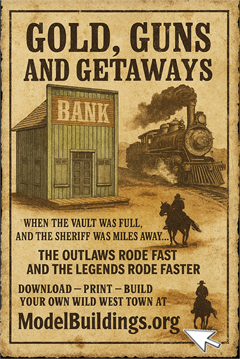Everything on model trains, model railroads, model railways, locomotives, model train layouts, scenery, wiring, DCC and more. Enjoy the world's best hobby... model railroading!
Displaying Locos With Lights and Sounds
Steve asks:
“I don’t have space for a staging yard, so I thought I will display some locomotives on shelves directly above my layout. Then I had a brainwave to lay some track on each shelf and wire each so that I can demonstrate the working lights and sounds without having the locos move. Is there an easy way to do this? Appreciate your input thank you.”
To add a comment (or view all comments) simply click on the ADD A COMMENT link under this post.
4 Responses to Displaying Locos With Lights and Sounds
Leave a Reply















Steve,
I assume you are working in DC. It is very easy in DCC but in DC not so much.
sure with DCC.connect to the lowest track, at the end wire to next level and keep going until each level is wired. Don’t forget to have each level have a bolt or something to keep the locos from going off either end. Then you can tell any loco to whistle or control lights air pumps brakes everything that is available.
As Tom says, for DCC, with all the tracks connected as one track, you can control your lights, bells and whistles from the DCC controller.
However, for the automatic DCC engine speed sounds (running either on DC or DCC track), the loco wheels will have to be moving. There are two ways of doing this:
1) have the locos raised up on rolling roads, (maybe expensive unless you build your own).
2) have the locos raised up on hidden blocks, so that the wheels are just clear of the rails, and fit little brass (or phosphor bronze wire) spring strips to contact the wheels. (Or fit a dedicated power plug or contacts under the loco.)
You can get a display case with a track in it for your scale. Get an inexpensive transformer to set up wires into it to power the lights and sounds. (in DC) This will address the lighting and other items that do not power the pulling equipment. Put blocks to keep the car stationary with leads contacting the leads into the items.
For demonstrating a pulling power unit, set up a “testing” track with a under bracket to support the engine off the track. Run contact strips under the two wheels involved in powering the unit. The bracket will keep the wheels from touching the actual rail. I.e., “floating” wheels. .
The above are for consideration for starters. Each situation would require finer modifications.
There are so many different ways of doing this. As it can be seen in the diversity for window displays that often appear in store window.
A caveat to keep in mind. Do not overpower the models.